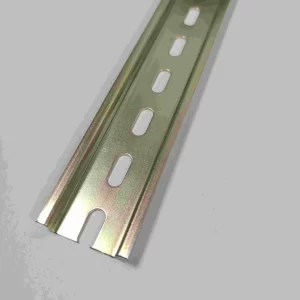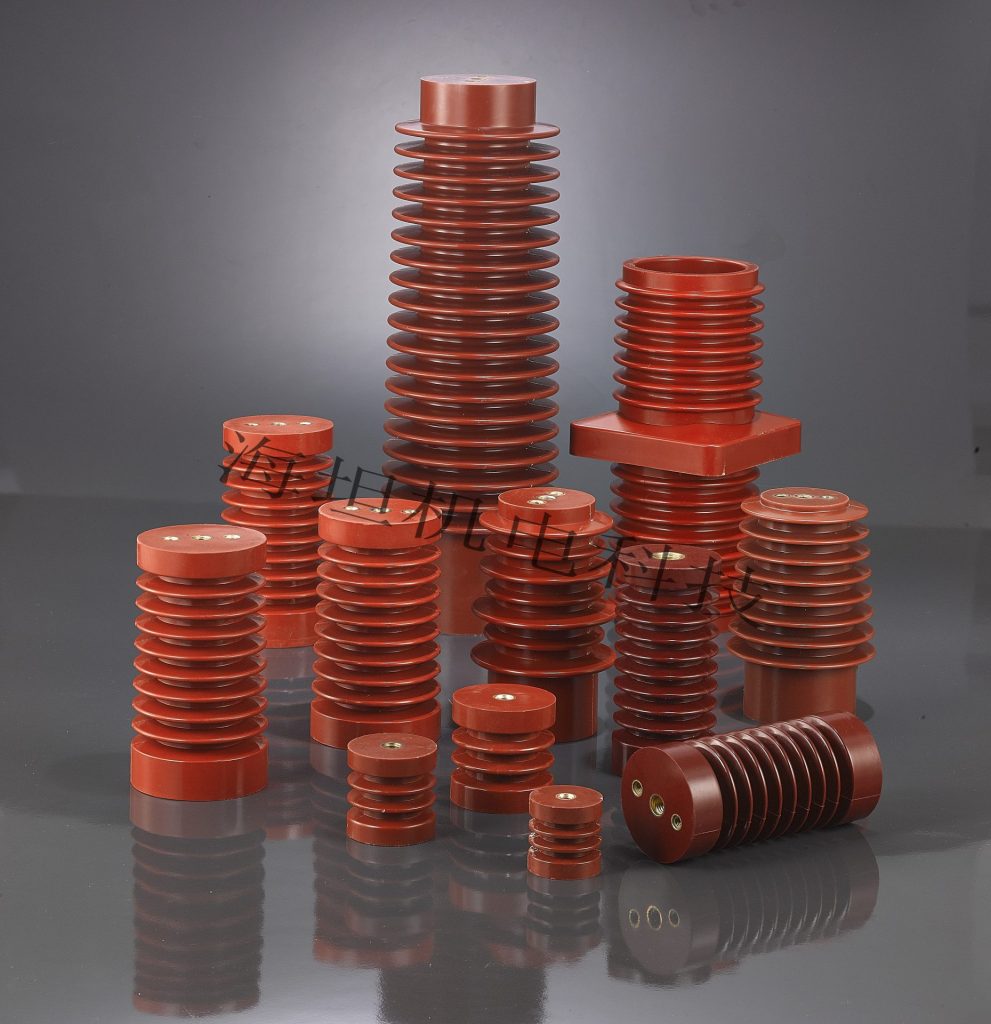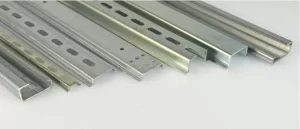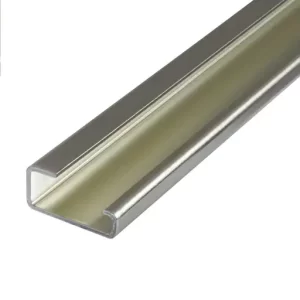Everything You Need to Know About DIN Rail
DIN rail is important to electrical and industrial control systems as it provides a standard mounting method for circuit breakers, relays, power supplies, and even programmable logic controllers (PLCs). With these components placed on the din rail, organisation, maintenance, and installation within enclosures are handled efficiently. This guide will provide you with the necessary information regarding the development of din rail and its standards, benefits, types, selection, and installation, including their specifications.
1. What Are DIN Rails?
din rail is metal mounting strips used in electrical systems to hold and secure components inside distribution boxes, control panels, and industrial enclosures. They have crippling acceptance among industries due to their universality and simplicity of installation. Made out of steel, aluminum, or stainless steel, din rail come in various widths depending on specific applications.
The name “DIN” is derived from the German Institute for Standardization (Deutsches Institut für Normung), which laid down this system for the standardisation of electrical installations. Over the years, the standardisation of operations has had astonishing acceptance, and the use of din rail is now accepted globally for industrial and commercial electrical systems.
1.1 Evolution
The concept of din rail was introduced in 1928 in Germany, addressing the need for a universal mounting system for electrical equipment. This development allowed components from different manufacturers to fit into standardized rails without requiring custom mounting solutions.
By the 1950s, the DIN rail system was widely adopted across Europe and later expanded globally. As of today, din rail is a must-have in the fields of telecommunications, power distribution, and automation, offering a reliable framework for organizing and securing electrical components.
1.2 DIN Rail Standards
In order to ensure the compatibility and safety of components mounted on din rail, there are universal standards set by governing bodies, the most prominent of which is DIN EN 60715, which specifies the materials to be used and the design and installation requirements of din rail.
Other related standards include:
| Standard | Region | Description |
| DIN EN 60715 | Global | Defines standard DIN rail dimensions and specifications |
| EN 50022 / BS 5584 | Europe & UK | Specifies 35mm din rail used for breakers, power supplies, and relays |
| EN 50035 / BS 5825 | Europe & UK | Covers G-type DIN rails for industrial applications |
| IEC 60947 | Global | Covers low-voltage switchgear mounting |
| AS 2756.1997 | Australia | Defines mechanical support requirements for electrical equipmen |
These standards ensure that din rail remain interchangeable and compatible across industries and geographical regions, facilitating seamless integration into various applications.
2. Benefits of DIN Rails
Din rail is widely used because it offer many advantages for electrical and industrial applications.
Standardization: This ensures that electrical components from different manufacturers can be easily mounted onto the same rail. This simplifies system design and provides flexibility for upgrades and equipment replacement.
Space efficiency: Compact mounting options save space and din rail enable compact installations, maximising the use of available space in electrical cabinets and control panels. By reducing clutter and organizing components neatly, they improve airflow and prevent overheating.
Cost savings: As components can be installed or removed without the use of specialised tools, installation and maintenance costs are greatly decreased. This also reduces industrial downtime. ensuring continued operation in industrial environments.
Reliable and firm mounting: DIN rail reduce the risk of components becoming loose due to vibrations or movement. It is made to last, as stainless steel din rail offer protection against corrosion, which is useful in more extreme environments.
Support scalability: The ability for modular expansion provides ease as system requirements increase. New components can be incorporated without significant alterations, making them a more suitable option for electrical installations in the future.
3. Types of DIN Rails
There are several types of DIN rails, each designed for specific applications.
TS35 or Top Hat Rail is a universal standard rail with a standard size that is supported by almost all electric equipment manufacturers. It is offered in two depth variations: 35mm x 7.5mm and 35mm x 15mm, both of which comply with the EN 50022 standard. Owing to its versatility and wide compatibility, it is perfect for mounting circuit breakers, PLCs, relays and power supplies.

The TS15 or Miniature Top Hat Rail is the quintessential rail for compact applications. It is only 15mm wide and is specifically built for small cases with less available space. Even when greatly reduced in size, it maintains the same standard mounting mechanism as the larger rails.
Another variant is the TS32, commonly referred to as the C-Section Rail. This type is available in various heights, including C20, C30, C40, and C50, and is often used for heavier components such as transformers and power supplies. While this rail type was more prevalent in older installations, it has gradually been replaced by the TS35 in modern applications.
The so-called G-Type Rail, which conforms to EN 50035, can be found in rough industrial environments. Its asymmetric shapes offer additional support for case structures, especially in environments with strong vibrations or mechanical stress. This rail is preferred for applications that require robust support for high-power electrical components.
4. How to Choose the Right DIN Rail
Choosing the right DIN rail depends on several factors, including size, material, and application requirements.
The most common choice for general electrical installations is the TS35 DIN rail (35mm x 7.5mm or 35mm x 15mm). This size accommodates a wide range of components and is compatible with most industry standards.
The TS15 rails are more suited for compact control panels where efficiency of space utilisation along with functionality is essential.
For high-power or industrial applications, the C-section or G-type DIN rail may be required as these have a better load capacity and additional vertical support.
The choice of material is also important. Galvanised steel din rail offer a good strength-to-cost balance, making them the preferred option for standard installations. However, if the environment is prone to moisture, chemically corrosive elements, or extremely low or high temperatures, using stainless steel din rail would be advisable due to their high resistance to rust and corrosion. When weight is a concern, aluminium rails are preferred. They are lighter and do not compromise functionality.
Another factor to consider is whether to use slotted or unslotted din rail. DIN rail slotted specs provide ventilation and allow for easier component mounting, while unslotted DIN rails have superior rigidity, making them more suitable for high-vibration environments.
5. Installation & Maintenance of DIN Rails
Proper installation and maintenance of din rail is essential for ensuring long-term system reliability.
Installation Basic Steps usually include marking the control panel where the rail will be mounted, fastening the rail with screws or mounting clips, and placing the electrical components onto the rail. In most circumstances, the DIN rail 35mm x 7.5mm is used because it is deep enough to accommodate a number of electrical components, while still being compact.
During installation, the components must be firmly secured to the mounting rail to prevent vibration and loosening of the components. A slotted version doesn’t require much effort as long as the slots are aligned properly.
Considering extreme ambient conditions, stainless steel DIN rails are the best recommended choice because they provide better protection from moisture and oxidation corrosion. Standard annual or scheduled maintenance will involve routine corrosion inspection and checking for any loose secured parts and components.
For installations where frequent changes are required, the modular DIN rail system configuration offers easy snap-on replacements without major system adjustments. With this flexibility, systems take minimal time for maintenance and upgrades with reduced downtime.
Conclusion
DIN rail provide a universal, efficient, and cost-effective solution for mounting electrical components. With options such as DIN rail 35mm x 7.5mm, stainless steel DIN rail, and slotted DIN rail versions, there is a solution for every application.
By choosing the right type of DIN rail and following proper installation and maintenance practices, users can ensure long-term reliability and optimal performance in electrical control systems.
Contact us to find the perfect fit for your electrical and industrial control systems.
--- END ---
© Copyright 2024 China Haitan Electromechanical Technology Co., Ltd. All rights reserved.SUPPORT BY:JUNJ Privacy Policy



 E-mail:
E-mail:  No. 20 Lingyun Road, Dongfeng
No. 20 Lingyun Road, Dongfeng 
